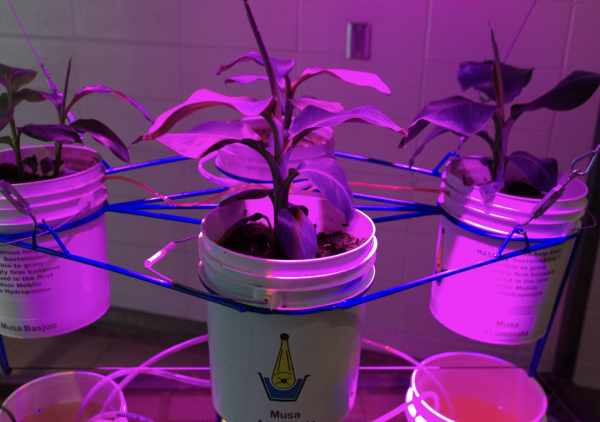Equity in Remote Learning: Lexington Public School Initiatives
January 10, 2021
Schools are closely associated with education, but they are also sources of support and security for students in need. Fulfilling these duties amidst the COVID-19 pandemic required immediate action in the Lexington Public Schools.
The sudden shift to remote learning in March presented a new set of challenges to create an equitable learning environment for students at Lexington High School.
With equity as a core tenet of the Lexington Public Schools System, efforts were made to academically and financially support students through access to electronic devices, the internet, school lunches, masks, and more.
“For a lot of our less privileged and marginalized students, school is a haven for them. It ends up being a place where they can be themselves,” Johnny Cole, Director of Equity and Student Supports at LPS, said.
Continuing to provide this support for students despite being remote was a high priority in the spring. Two areas were targeted: providing students with internet access and increasing food security.
Remote learning was entirely dependent on students having access to a stable internet connection, which posed a challenge for students without such a resource.
“Some students may have been unable to attend synchronous sessions and thus may have felt disconnected, literally, and socially isolated from their peers and teachers,” Ryan Casey, a Spanish teacher, said.
To alleviate these pressures, LHS provided students with personal hotspot devices, known as Kajeets, and connected families in need with Verizon WiFi services for free.
“During remote learning, I realized I’m in a relatively privileged position as a student with internet access and a space where I can work alone. However, it was stressful when I would lose internet connection, so I can’t imagine what it would be like for my fellow students to have that additional pressure,” Trisha Shenoy, a junior, said.
Providing families with a source of food security, while keeping health and safety in mind, was another important consideration.
“There were families who might have found themselves in a tough situation due to COVID-19 that they may have not been in months prior,” Cole said.
One initiative to help provide food security involved partnering with the Lexington Food Pantry and communicating with the larger Lexington community for food donations.
“That is another piece of how community supports work. It’s not just identifying those that are in need, but it’s also identifying those that have the means to help,” Cole said.
Feedback was another crucial component when creating an equitable learning environment for all students. In addition to school-wide surveys, Zoom meetings, emails, and even tweets were all used to gather feedback from the community in hopes of better providing for Lexington families.
To obtain additional feedback, LPS worked closely with local community organizations, such as the Indian Americans of Lexington, Association of Black Citizens of Lexington, and Chinese Americans of Lexington.
“As someone sitting at the table while we were putting together the blueprint, [I know that] everyone’s perspective and opinions went into what was going to work for the fall,” Cole said.
After months of preparation, educators feel more prepared to continue supporting their students this school year.
“Now that we aren’t scrambling in the wake of the initial closure and have had months to think about this issue, I hope we find more ways as a community to look out for one another and to make sure everybody has what they need to succeed during this unusual year,” Casey said.




